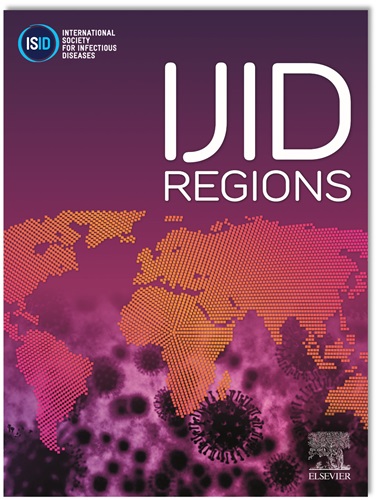Helicobacter pylori multiplex serology and its dynamics within families during a 3-year prospective follow-up
IF 4.3
2区 医学
Q1 INFECTIOUS DISEASES
引用次数: 0
Abstract
Objectives
Transmission routes of Helicobacter pylori (Hp) have been extensively studied, but many aspects remain unclear. This study explored the dynamics of multiplex Hp serology within regular families during a 36-month prospective follow-up.
Methods
Altogether, 329 families from the Finnish Family HPV study were subjected to sequential blood sampling and now tested also for six Hp proteins, HP0010, HP0073, HP0547, HP0875, HP0887, and HP1564, using multiplex serology assay.
Results
Hp seropositivity, defined as being seropositive to at least three of the six Hp proteins, was more common among the fathers (20%) than mothers (10%). After maternal antibody decay, only a few children tested Hp-seropositive at later follow-up visits, indicating that acquisition of Hp infection is practically non-existent (0.4-2.0%) at an early age. No evidence was found to support the person-to-person transmission of Hp in this cohort because there was no correlation in Hp seropositivity or antibody levels between the spouses and/or their offspring, and individuals who were Hp-seropositive did not seem to increase the risk of other family members to co-test Hp-seropositive.
Conclusions
Our results perfectly agree with a recently published register-linkage study from Finland, where Hp and Hp-related co-morbidity are predicted to disappear among the native Finns during the 21st century.
幽门螺杆菌(Hp)多重血清学及其在家庭中的动态三年前瞻性随访。
目的:幽门螺杆菌(Hp)的传播途径已被广泛研究,但许多方面仍不清楚。本研究在为期36个月的前瞻性随访中探讨了普通家庭多重hp血清学的动态。方法:来自芬兰HPV家族(FFHPV)研究的329个家族接受了顺序血液采样,现在也检测了6种hp蛋白;HP0010, HP0073, HP0547, HP0875, HP0887,和HP1564使用多重血清学测定。结果:Hp血清阳性(即6种Hp蛋白中至少3种血清阳性)在父亲(20%)中比母亲(10%)更常见。在母亲抗体衰减后,只有少数儿童在后来的随访中检测出hp血清阳性,这表明在早期获得hp感染实际上是不存在的(0.4%至2.0%)。在该队列中,没有发现证据支持Hp的人际传播,因为配偶和/或其后代之间的Hp血清阳性或抗体水平没有相关性,并且Hp血清阳性个体似乎不会增加其他家庭成员共同检测Hp血清阳性的风险。结论:我们的结果与芬兰最近发表的一项登记连锁研究完全一致,该研究预测,在21世纪,芬兰人的Hp和Hp相关的合并症将消失。
本文章由计算机程序翻译,如有差异,请以英文原文为准。
求助全文
约1分钟内获得全文
求助全文
来源期刊
CiteScore
18.90
自引率
2.40%
发文量
1020
审稿时长
30 days
期刊介绍:
International Journal of Infectious Diseases (IJID)
Publisher: International Society for Infectious Diseases
Publication Frequency: Monthly
Type: Peer-reviewed, Open Access
Scope:
Publishes original clinical and laboratory-based research.
Reports clinical trials, reviews, and some case reports.
Focuses on epidemiology, clinical diagnosis, treatment, and control of infectious diseases.
Emphasizes diseases common in under-resourced countries.

 求助内容:
求助内容: 应助结果提醒方式:
应助结果提醒方式:


